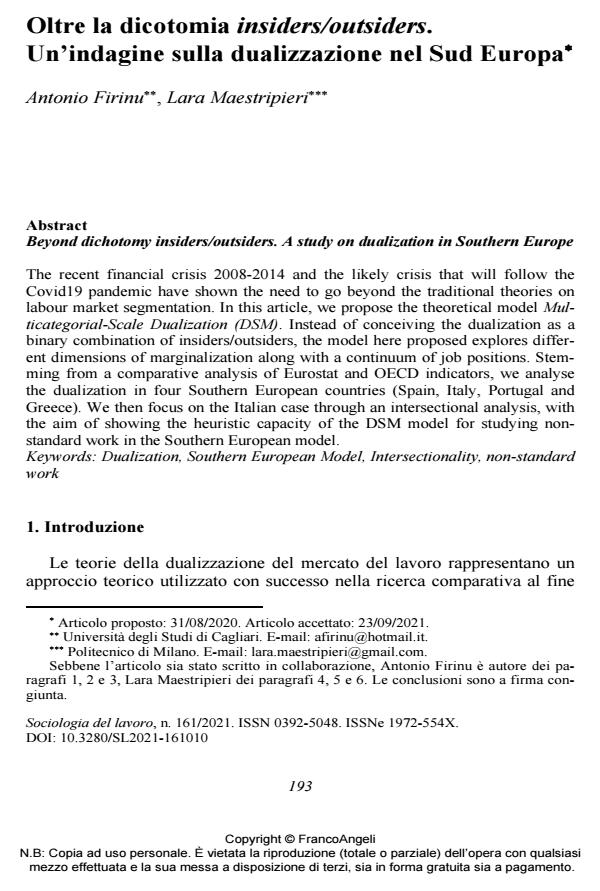Beyond dichotomy insiders/outsiders. A study on dualization in Southern Europe
Journal title SOCIOLOGIA DEL LAVORO
Author/s Antonio Firinu, Lara Maestripieri
Publishing Year 2021 Issue 2021/161
Language Italian Pages 25 P. 193-217 File size 486 KB
DOI 10.3280/SL2021-161010
DOI is like a bar code for intellectual property: to have more infomation
click here
Below, you can see the article first page
If you want to buy this article in PDF format, you can do it, following the instructions to buy download credits

FrancoAngeli is member of Publishers International Linking Association, Inc (PILA), a not-for-profit association which run the CrossRef service enabling links to and from online scholarly content.
The recent financial crisis 2008-2014 and the likely crisis that will follow the Covid19 pandemic have shown the need to go beyond the traditional theories on labour market segmentation. In this article, we propose the theoretical model Mul-ticategorial-Scale Dualization (DSM). Instead of conceiving the dualization as a binary combination of insiders/outsiders, the model here proposed explores differ-ent dimensions of marginalization along with a continuum of job positions. Stemming from a comparative analysis of Eurostat and OECD indicators, we ana-lyse the dualization in four Southern European countries (Spain, Italy, Portugal and Greece). We then focus on the Italian case through an intersectional analysis, with the aim of showing the heuristic capacity of the DSM model for studying non-standard work in the Southern European model.
Keywords: Dualization, Southern European Model, Intersectionality, non-standard work
Antonio Firinu, Lara Maestripieri, Oltre la dicotomia insiders/outsiders. Un’indagine sulla dualizzazione nel Sud Europa in "SOCIOLOGIA DEL LAVORO " 161/2021, pp 193-217, DOI: 10.3280/SL2021-161010